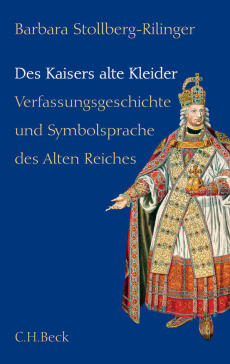One of the best experts of the history of the Holy Roman Empire shines a light on the fascinating interaction between written constitution and the ritually lived constitutional order. For the first time, constitutional history is understood from the perspective of its symbolic and ritual forms and how they changed over time.
How were imperial vassals granted lands? How were agreements reached at imperial assemblies? How did ambassadors interact at princes’ courts? What the constitution said about these affairs was one thing, but whether and to what extent these rules were put into practice was another, dependent on a complex system of ritual behaviour. In this gripping book, Barbara Stollberg-Rilinger shows how a language of political signs, which all the participants mastered and which acted as a basic kind of shared symbolic vocabulary, was indispensable for making agreements about a shared political order.
For many years, scholars have struggled to write the history of the constitution and political structure of the Holy Roman Empire. This book argues that this was because the political and social order could not be understood without considering the rituals and symbols that held the Empire together. What determined the rules (and whether they were followed) depended on complex symbolic-ritual actions. By examining key moments in the political history of the Empire, the author shows that it was a vocabulary of symbols, not the actual written laws, that formed a political language indispensable in maintaining the common order.
“Given the Empire’s multitude of political units, varying in size, structure, and relative position, students and scholars of early modern German history are accustomed to sorting a profusion of names, places, titles, and events. Stollberg-Rilinger makes this difficult task more bearable, not only through her writing—by stating, rather than merely suggesting, the point of each vignette—but also, more importantly, by articulating a “logic” of the Empire’s great constitutional complexity, and its transformation. Her descriptions, here skillfully rendered in Dunlap’s translation, show that legal history can vividly link the ideational and the material.” (Law & History Review)
Literature: Stollberg-Rilinger, Barbara, Des Kaisers alte Kleider. Verfassungsgeschichte und Symbolsprache des Alten Reiches, Munich: C.H. Beck, 2nd edition 2013.


